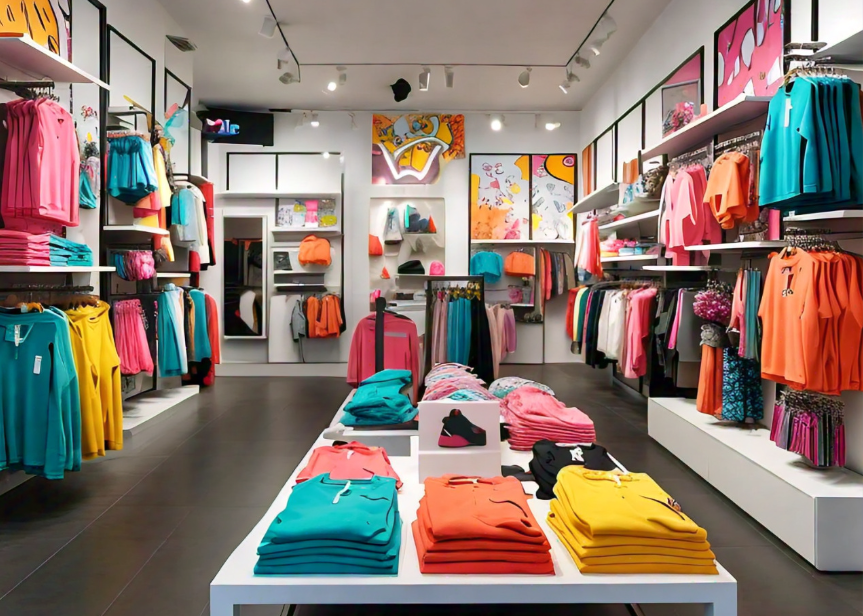In 2025, retail store design trends are expected to emphasize the seamless integration of shelving and display cases to create captivating and functional spaces. Retailers will focus on modular and customizable shelving units to accommodate ever-changing product displays and seasonal promotions. Store design in Toronto looks forward.
Be Eclectic and Different
The use of transparent and interactive display cases will also be prevalent, allowing customers to engage with products tactile and immersively. Store design in Toronto will enhance stores’ visual appeal and contribute to an interactive shopping environment.
Additionally, incorporating sustainable materials in shelving and display cases will align with the overarching trend of embracing eco-friendly practices in retail design. These design elements will enhance stores’ visual appeal and contribute to a more interactive and experiential shopping environment.
1. Embracing Sustainability
Sustainability continues to be a driving force in retail design. In 2025, more stores will incorporate eco-friendly materials, energy-efficient lighting, and sustainable practices. Creating a green retail environment attracts eco-conscious consumers and enhances your brand image.
2. Interactive and Experiential Spaces
Shoppers are increasingly looking for experiences over products. Retailers can create interactive spaces that engage customers through technology, demonstrations, or immersive displays. This trend encourages shoppers to spend more time in-store, enhancing their overall experience and increasing sales.
3. Flexible Layouts
As consumer behavior evolves, retailers must adapt their layouts to accommodate changing needs. Flexible design allows for easy reconfiguration of spaces, enabling retailers to host events, pop-ups, or seasonal promotions. This adaptability helps retailers stay competitive in an ever-changing market.
4. Technology Integration
Incorporating technology into retail design is essential for staying relevant. Integrating tech enhances convenience and engages customers, from augmented reality fitting rooms to mobile payment solutions. Investing in these technologies can set your store apart and streamline the shopping experience.
For example, implementing interactive digital displays can provide customers with detailed product information and personalized recommendations, enhancing their overall shopping experience. Additionally, leveraging data analytics and artificial intelligence can help retailers understand consumer behavior and preferences, leading to more targeted marketing strategies and product offerings.
Incorporating seamless omni-channel experiences, such as click-and-collect services and in-store digital kiosks, can bridge the gap between online and offline shopping, providing customers with a cohesive and convenient shopping journey.
Ultimately, embracing technology in retail design is not just about keeping up with trends, but also about meeting the evolving needs and expectations of today’s tech-savvy consumers.
5. Community-Centric Designs
In 2025, retailers will increasingly focus on community engagement. Designing stores that foster a sense of community—such as hosting local events or incorporating local art—can strengthen customer loyalty.
Creating a welcoming environment encourages repeat visits and builds a strong brand connection. In conclusion, by prioritizing community engagement and creating a warm and inviting atmosphere, retailers can form deeper connections with their customers, inspire loyalty, and set themselves apart in an increasingly competitive market. Cheers to a future of thriving, community-centered retail experiences!

